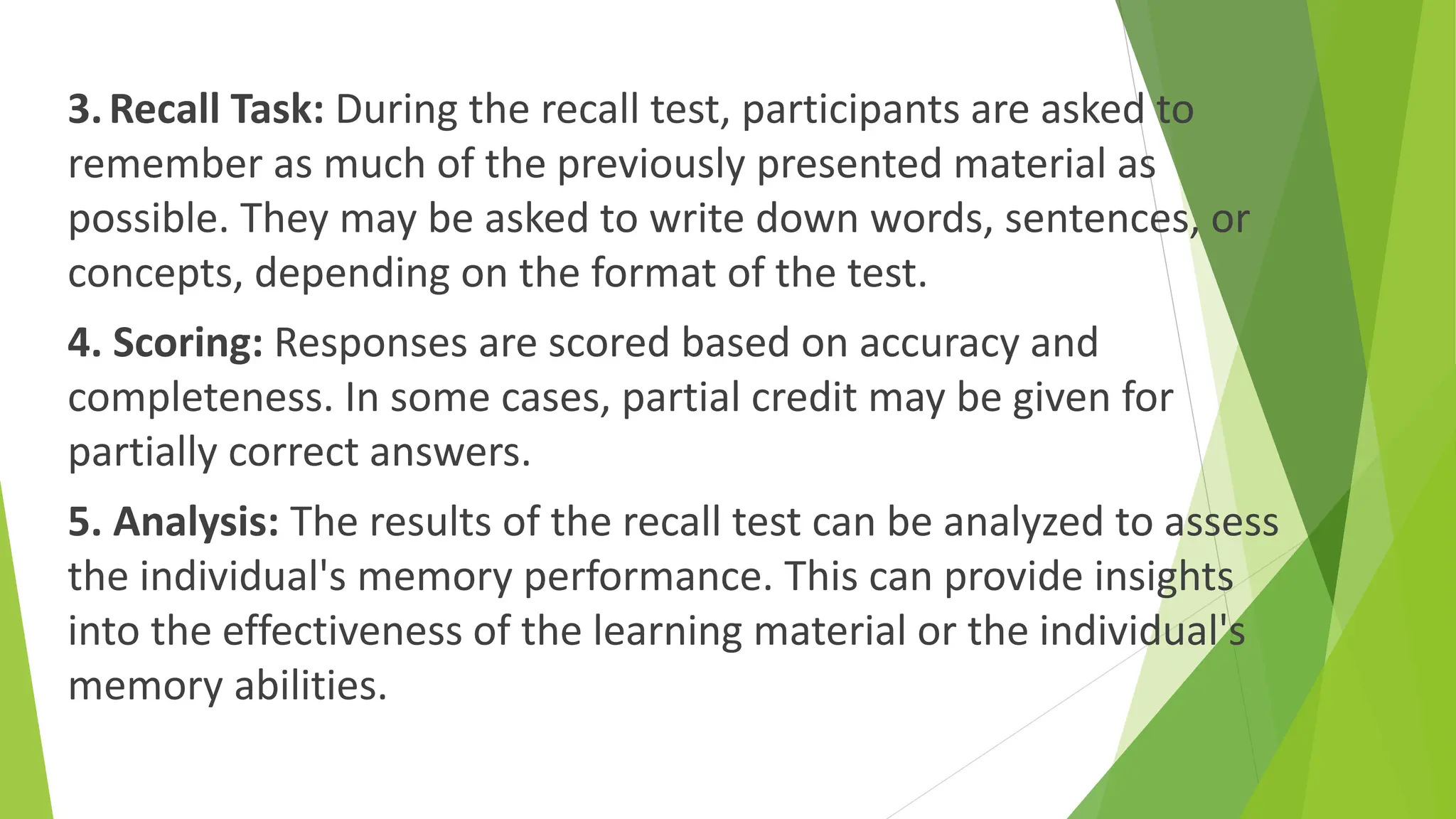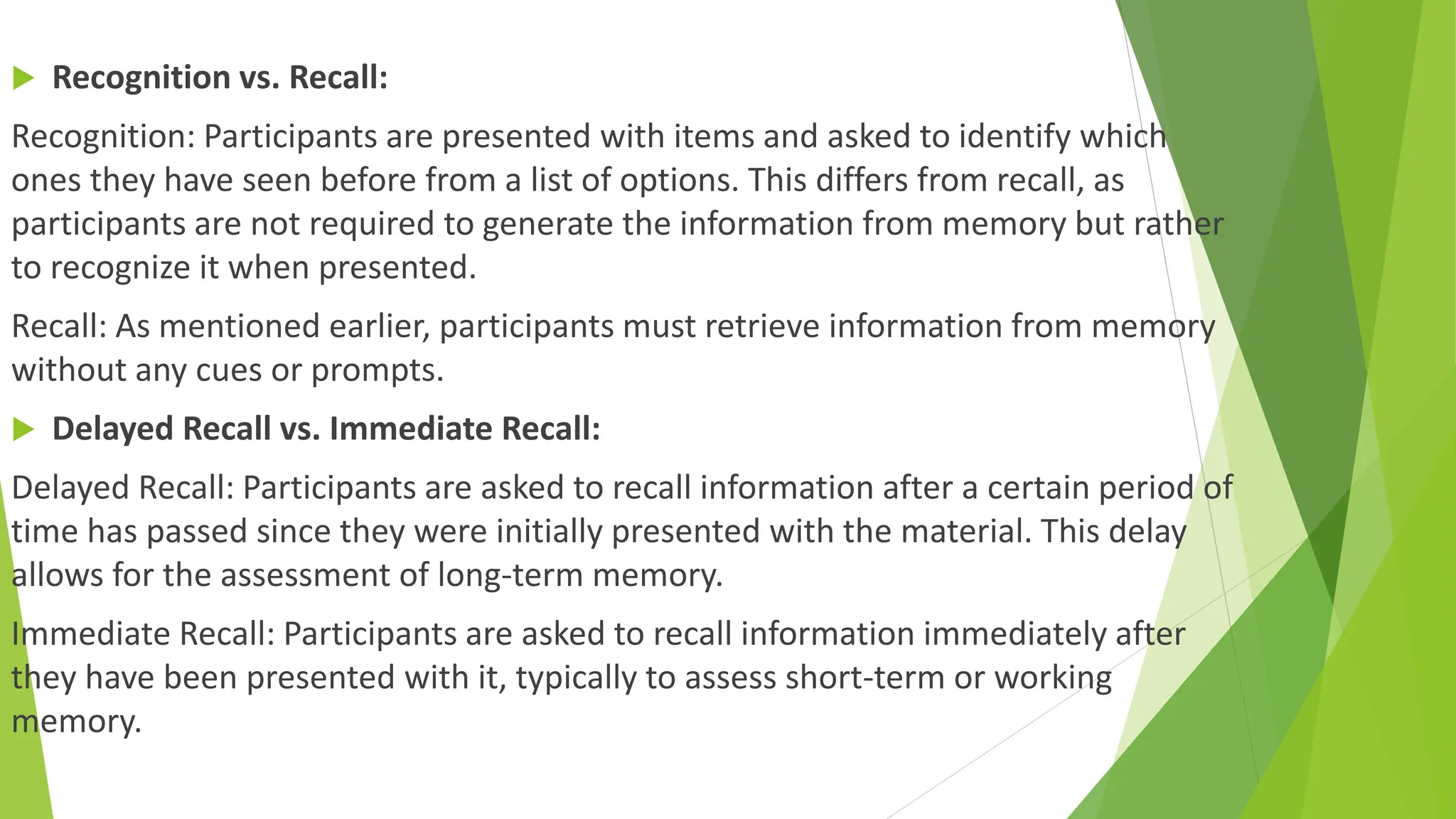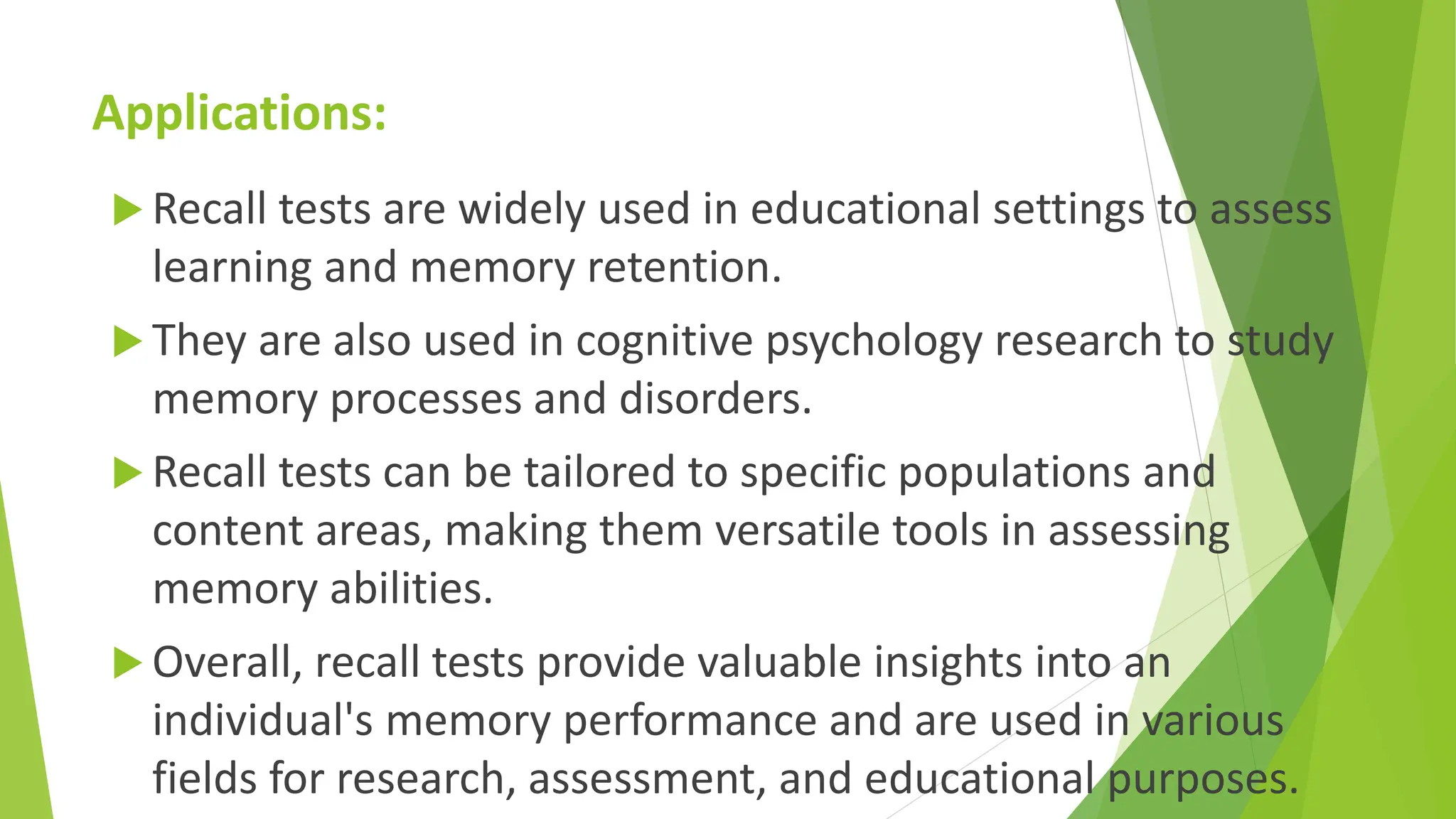The document discusses recall tests, which assess an individual's ability to retrieve information from memory without cues. A recall test involves presenting material to learn, a delay, then asking participants to recall as much of the material as possible. Responses are scored for accuracy and completeness to analyze memory performance. Recall tests are useful for evaluating teaching methods, assessing learning difficulty, and identifying areas needing more instruction.










